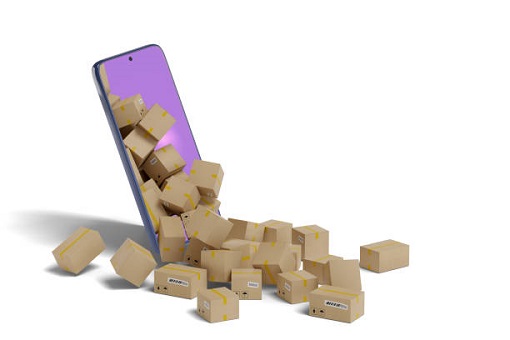Drop shipping Made Easy: A Step-by-Step Guide for Beginners
Passive Income through Dropshipping: A Beginner’s Guide
In today’s fast-paced world, the concept of passive income has gained significant popularity. The ability to generate income with minimal effort and time investment has become a goal for many individuals. One of the emerging avenues for passive income is dropshipping, which offers an opportunity to run an e-commerce business without the need for inventory management or order fulfillment. In this beginner’s guide, we will explore the world of dropshipping, discussing how it works and providing valuable insights into setting up a successful dropshipping business.
Understanding Dropshipping
What is Dropshipping?
Dropshipping is an e-commerce business model that allows entrepreneurs to sell products online without having to store inventory. Instead of purchasing products in bulk and managing the fulfillment process, dropshippers work with suppliers who directly ship products to the customers. The dropshipper acts as a middleman, handling the marketing, customer service, and order management aspects of the business.
How Dropshipping Works
The dropshipping process involves a few key steps. First, the dropshipper sets up an online store, showcasing products from various suppliers. When a customer places an order on the dropshipper’s website, the order details are forwarded to the supplier who then ships the product directly to the customer. The dropshipper earns a profit by selling the product at a higher price than the wholesale cost charged by the supplier.
Benefits of Dropshipping as a Passive Income Stream
Dropshipping offers several advantages for individuals looking to generate passive income:
- Low Startup Costs: Unlike traditional retail businesses that require significant upfront investment in inventory and storage space, dropshipping allows you to start with minimal capital. You only need to pay for the products when a customer makes a purchase.
- Flexibility and Location Independence: With a dropshipping business, you have the freedom to work from anywhere with an internet connection. You can run your business from the comfort of your home or even while traveling.
- No Inventory Management: One of the biggest advantages of dropshipping is that you don’t have to worry about inventory management. The suppliers handle the storage and shipping of products, saving you time and effort.
- Wide Product Selection: Dropshipping gives you access to a vast range of products from different suppliers. You can easily expand your product offerings without the need to invest in additional inventory.
- Scalability: As your dropshipping business grows, you can scale up by adding more products or partnering with multiple suppliers. With proper management, you can increase your sales volume and profitability.
Choosing a Profitable Niche
When starting a dropshipping business, selecting the right niche is crucial for long-term success. Here are some key points to consider:
- Research and Market Demand: Conduct thorough market research to identify niches with high demand and low competition. Look for products that solve a problem or cater to a specific target audience.
- Passion and Interest: Choose a niche that aligns with your interests and passions. It will be easier to stay motivated and engage with your business when you are genuinely interested in the products you sell.
- Profitability: Evaluate the profit margins of potential products within your chosen niche. Consider the price point, competition, and any additional costs associated with marketing and shipping.
- Trends and Seasonality: Keep an eye on current trends and seasonal fluctuations. It’s essential to choose a niche with sustainable demand throughout the year, rather than one that is highly seasonal.
Once you have identified a profitable niche, it’s time to set up your dropshipping business.
Setting Up Your Dropshipping Business
To get started with dropshipping, you need to follow these steps:
- Create an Online Store: Choose a reliable e-commerce platform to build your online store. Shopify, WooCommerce, and BigCommerce are popular options that offer user-friendly interfaces and robust features.
- Select a Domain Name: Choose a domain name that reflects your brand and is easy to remember. Make sure it is relevant to your niche and resonates with your target audience.
- Choose a Theme and Design: Select an appealing theme for your online store that provides a seamless user experience. Customize the design to match your brand identity and make navigation intuitive.
- Integrate Payment Gateways: Set up secure payment gateways that allow your customers to make purchases easily. Popular options include PayPal, Stripe, and Square.
- Implement Inventory Management Systems: Utilize inventory management software or plugins to sync product availability across your online store and suppliers’ inventory. This ensures accurate stock information and prevents overselling.
- Ensure Website Security: Install SSL certificates to encrypt sensitive customer information and provide a secure browsing experience. Security is crucial for gaining customer trust and protecting their data.
With your dropshipping business set up, the next steps is to source products and find reliable suppliers.
Sourcing Products and Suppliers
Finding reputable suppliers is essential for the success of your dropshipping business. Here’s how you can go about it:
- Research Supplier Directories: Explore reputable supplier directories such as Oberlo, AliExpress, SaleHoo, or Worldwide Brands. These platforms connect dropshippers with suppliers across various industries.
- Evaluate Supplier Reliability: Thoroughly assess suppliers based on factors like product quality, shipping times, customer reviews, and responsiveness. Look for suppliers who have a good track record and are known for their reliability.
- Contact Potential Suppliers: Reach out to potential suppliers to inquire about their product catalog, pricing, and shipping policies. Ask for samples if necessary to assess product quality firsthand.
- Negotiate Terms and Conditions: Negotiate favorable terms with your chosen suppliers, such as discounted prices, faster shipping, or exclusive partnerships. Building a good relationship with suppliers can lead to better deals and improved service.
When selecting suppliers, prioritize those who offer competitive prices, quality products, and efficient shipping methods. This will help ensure customer satisfaction and repeat business.
Optimizing Your Online Store
Having an optimized online store is crucial for attracting customers and driving sales. Consider the following tips to optimize your dropshipping website:
- Design an Appealing Website: Create a visually appealing website that reflects your brand’s identity. Use high-quality images, clear product descriptions, and an intuitive layout to enhance the user experience.
- Implement Effective SEO Strategies: Conduct keyword research and optimize your website’s content with relevant keywords. This will improve your search engine rankings and make it easier for potential customers to find your store.
- Write Persuasive Product Descriptions: Craft compelling product descriptions that highlight the benefits and features of your products. Use persuasive language and address potential customer concerns to increase conversions.
- Optimize Website Speed: Ensure that your website loads quickly by optimizing image sizes, minimizing code, and using a reliable hosting provider. A fast-loading website improves user experience and reduces bounce rates.
- Incorporate Customer Reviews and Testimonials: Display customer reviews and testimonials on your website to build trust and credibility. Positive reviews provide social proof and encourage potential customers to make a purchase.
By implementing these optimization techniques, you can enhance the visibility and attractiveness of your online store, leading to increased traffic and sales.
Marketing and Promoting Your Store
To drive traffic and generate sales, you need to market and promote your dropshipping store effectively. Here are some strategies to consider:
- Develop a Comprehensive Marketing Plan: Outline your marketing goals, target audience, and strategies. This can include a combination of social media marketing, email marketing, influencer collaborations, content marketing, and paid advertising.
- Utilize Social Media Platforms: Leverage social media platforms like Facebook, Instagram, Pinterest, and TikTok to showcase your products, engage with your audience, and run targeted ad campaigns. Create compelling content that resonates with your target market.
- Collaborate with Influencers: Partner with influencers or micro-influencers in your niche to promote your products. Influencer marketing can help you reach a wider audience and build trust through recommendations from trusted personalities.
- Implement Email Marketing: Build an email list and utilize email marketing campaigns to nurture leads and encourage repeat purchases. Offer exclusive discounts, product updates, and valuable content to keep subscribers engaged.
- Create Compelling Content: Develop valuable content that educates, entertains, or solves problems for your target audience. This can include blog posts, videos, tutorials, or infographics. Share your content on your website and social media platforms to drive traffic and establish your brand as an authority in your niche.
Remember to track your marketing efforts using analytics tools and make adjustments based on the data to optimize your campaigns.
Order Fulfillment and Customer Service
Efficient order fulfillment and excellent customer service are essential for the success of your dropshipping business. Consider the following tips:
- Manage Orders and Shipping Processes: Regularly monitor incoming orders and ensure timely communication with your suppliers. Stay organized by using order management software or spreadsheets to track order status, shipping information, and delivery updates.
- Provide Excellent Customer Service: Respond promptly to customer inquiries, concerns, and feedback. Offer multiple channels of communication, such as email, live chat, or phone support, to address customer needs effectively.
- Maintain Transparency: Be transparent with your customers about shipping times, potential delays, and any additional fees or taxes. Setting realistic expectations and providing accurate information builds trust and reduces customer dissatisfaction.
- Handle Returns and Refunds: Establish a clear and fair return policy. Promptly address return requests and process refunds or exchanges in a timely manner. Strive to provide a hassle-free and positive customer experience.
Remember, satisfied customers are more likely to leave positive reviews, refer your store to others, and make repeat purchases.
Analyzing and Scaling Your Business
To grow your dropshipping business and increase profitability, it’s crucial to regularly analyze data and make informed decisions. Consider the following steps:
- Monitor Key Performance Indicators (KPIs): Track important metrics such as conversion rates, average order value, customer acquisition costs, and return on investment (ROI). Analyzing these metrics helps you identify areas for improvement and measure the effectiveness of your strategies.
- Analyze Sales and Customer Data: Utilize analytics tools to gain insights into customer behavior, preferences, and buying patterns. This information can help you identify popular products, target specific customer segments, and personalize your marketing efforts.
- Optimize Marketing Campaigns: Continuously optimize your marketing campaigns based on data analysis. Test different strategies, measure their impact, and allocate resources to the most effective channels and campaigns.
- Scale Your Operations: As your business grows, consider expanding your product range, partnering with additional suppliers, and exploring new markets. Continuously evaluate your operations and implement strategies that allow for scalability and increased profitability.
Remember, scaling your business requires careful planning, adaptation to market trends, and an ongoing commitment to improving your processes.
Risks and Challenges
While dropshipping offers numerous benefits, it’s important to be aware of potential risks and challenges. Here are a few common ones:
- Supplier Reliability: Relying on suppliers means you have less control over product quality, shipping times, and inventory management. Thoroughly vet your suppliers and establish clear communication channels to mitigate this risk.
- Competition and Market Saturation: Dropshipping has become increasingly popular, leading to market saturation in some niches. Differentiate your store by offering unique products, exceptional customer service, and targeted marketing strategies.
- Order Fulfillment Issues: Despite your best efforts, there may be instances where orders are delayed, lost, or damaged during shipping. Have a plan in place to handle these situations promptly and ensure customer satisfaction.
- Customer Service Challenges: Providing excellent customer service can be demanding, especially when handling a high volume of inquiries and resolving issues. Invest in reliable customer service solutions and consider outsourcing or automating certain tasks to streamline the process.
By acknowledging and proactively addressing these challenges, you can better navigate the dropshipping landscape and minimize potential risks.
Conclusion
Starting a dropshipping business offers the opportunity to generate passive income and become your own boss. By selecting a profitable niche, setting up an optimized online store, sourcing reliable suppliers, implementing effective marketing strategies, and providing excellent customer service, you can build a successful dropshipping business. Remember to continuously analyze data, optimize your operations, and adapt to market trends to scale your business and stay competitive.
With dedication, perseverance, and a customer-centric approach, you can create a thriving dropshipping business that provides you with a steady stream of passive income.
Frequently Asked Questions (FAQs)
1. How much money do I need to start a dropshipping business? The beauty of dropshipping is that it requires minimal upfront investment. You’ll need to cover expenses such as setting up your online store, marketing, and any software or tools you choose to use. However, the amount can vary depending on your niche and business goals.
2. Can I run a dropshipping business alongside my full-time job? Absolutely! Dropshipping allows for flexibility, and many people successfully manage their business while working full-time. It requires effective time management and dedication, but it’s definitely achievable.
3. Do I need technical skills to start a dropshipping business? While having some technical skills can be beneficial, you don’t need to be a tech expert to start a dropshipping business. E-commerce platforms like Shopify and WooCommerce offer user-friendly interfaces that make it easy to set up and manage your online store.
4. How do I handle customer returns and refunds in dropshipping? Establish a clear and fair return policy for your customers. When a return or refund request arises, work closely with your supplier to ensure a smooth resolution. Promptly address customer concerns and aim to provide a positive experience throughout the process.
5. Can I sell products from multiple suppliers in my dropshipping store? Yes, you can work with multiple suppliers and offer a wide range of products in your dropshipping store. However, ensure that you have reliable suppliers and a streamlined system in place to manage inventory and order fulfillment effectively.
Remember, success in dropshipping requires continuous learning, adaptability, and a focus on providing value to your customers. Stay updated with industry trends, implement effective marketing strategies, and always prioritize excellent customer service.




